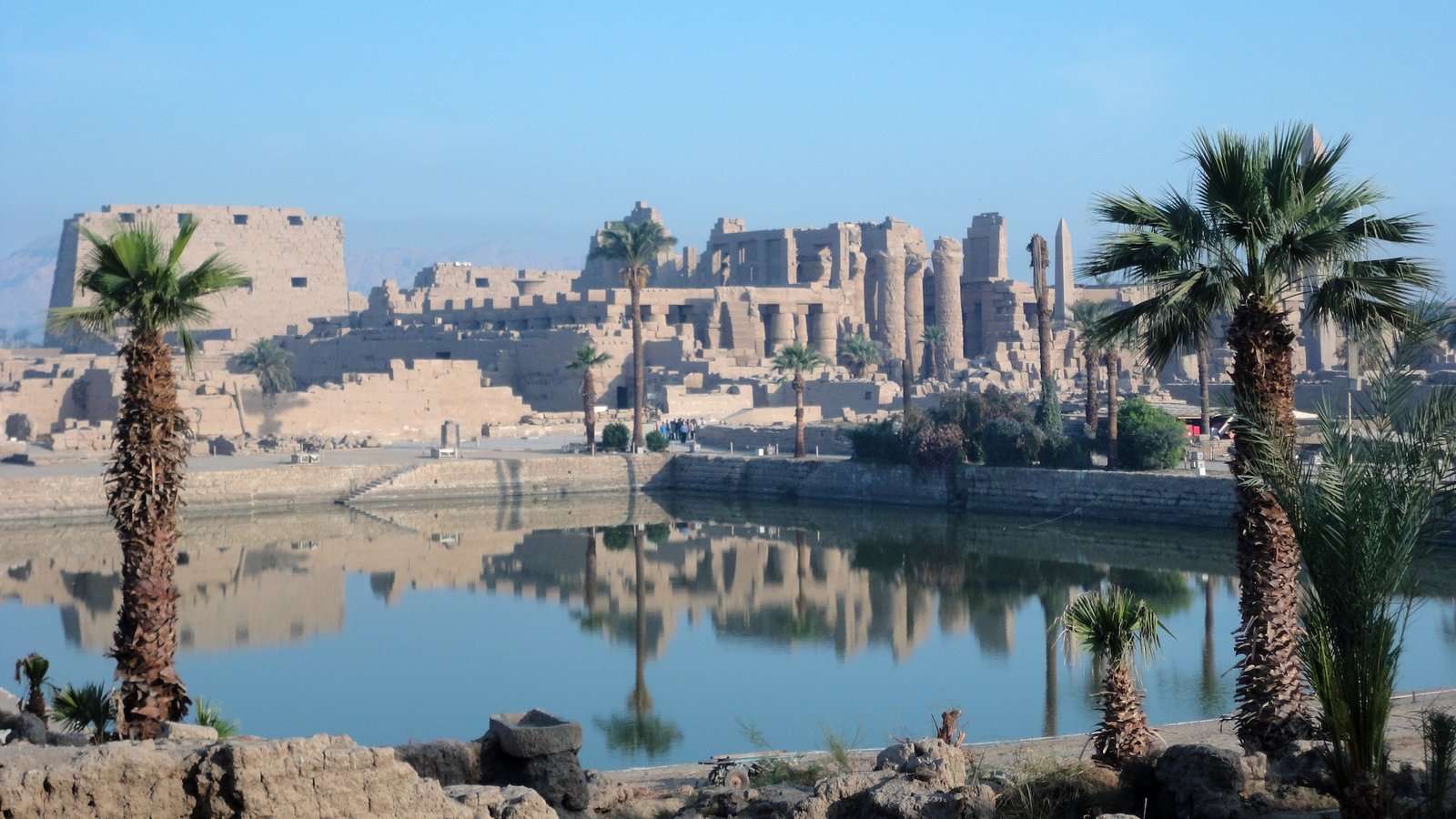The expansive ruins of Karnak Temple provide an unprecedented window into ancient Egypt. After decades of archaeological excavation work, researchers have amassed a treasure trove of information about the kingdom’s history, politics, culture, and religious practices. But experts have long remained divided on one major detail: Karnak’s actual age.
Recent analysis of ceramic fragments and dozens of geological samples appears to finally pinpoint a beginning era for the UNESCO World Heritage Site. According to an international research team, Karnak dates as far back as the Old Kingdom, circa 2591–2152 BCE. Experts detail their theory in a study published on October 6 in the journal Antiquity and point to the Nile River’s temperamental behavior as a major source of evidence.
“The age of Karnak Temple has been hotly contested in archaeological circles, but our new evidence places a temporal constraint on its earliest occupation and construction,” Kristian Strutt, a University of Southampton archaeologist and study co-author said in a statement.

Karnak is located about 1,640 feet east of the Nile as it flows today—but rivers aren’t exactly known for staying put. Instead, their millions of gallons of flowing water slowly carves paths that shift over centuries. Combine that with climatic changes, varying rainfall amounts, and floods, and it doesn’t take comparatively long for a river’s path to shift.
Strutt and colleagues recently analyzed 61 sediment core samples taken around Karnak, as well as tens of thousands of ceramic fragments. They then dated the cores and fragments, while examining the sediment’s chemical composition. With the new data, researchers determined how the Nile changed the surrounding landscape, as well as influenced Karnak’s construction.
Karnak’s earliest construction took place on an island of high ground carved between channels located on the Nile’s eastern and western banks. However, the team determined that prior to around 2520 BCE, no one would have wanted to build anything there. That’s because the sedimentary composition showed that the Nile’s fast waters and regular flooding would have made a permanent settlement there all-but-impossible. However, as the river channels diverged over the ensuing generations, more land opened up for the temple complex.
“The river channels surrounding the site shaped how the temple could develop and where, with new construction taking place on top of old rivers as they silted up,” said study co-author Dominic Barker.

Knowing this, the archaeologists believe Karnak’s earliest years likely trace back to Egypt’s Old Kingdom around 2,500 years ago. The ceramic shards coincide with this theory, with the earliest examples dating between 2305–1980 BCE. Barker also noted evidence of architectural landscaping. By dumping desert sand into these already widening channels, Karnak’s designers could create even more land for building.
This construction strategy may intentionally correlate to an Old Kingdom creation myth in which a creator god emerged from “the lake” in the form of higher ground.
“It’s tempting to suggest the Theban elites chose Karnak’s location for the dwelling place of a new form of the creator god, ‘Ra-Amun’, as it fitted the cosmogonical scene of high ground emerging from surrounding water,” explained geoarchaeologist and study co-author Ben Pennington.
This mythology continued to develop into the Middle Kingdom (c. 1980–1760 BCE). By that era, the creation story told of a “primeval mound” arising from the “Waters of Chaos.” This would have been naturally illustrated every year with the Nile’s annual flooding and receding waters.
In future studies, researchers plan to expand their survey to encompass the entire region’s floodplain, as well as conduct similar analysis at other major archaeological sites. In the meantime, it’s clear that Karnak Temple’s initial creation and later expansion functioned as a physical representation of ancient Egypt—both the society’s beliefs, as well as its most important waterway.
The post Vast ancient Egyptian temple dated to Old Kingdom appeared first on Popular Science.

